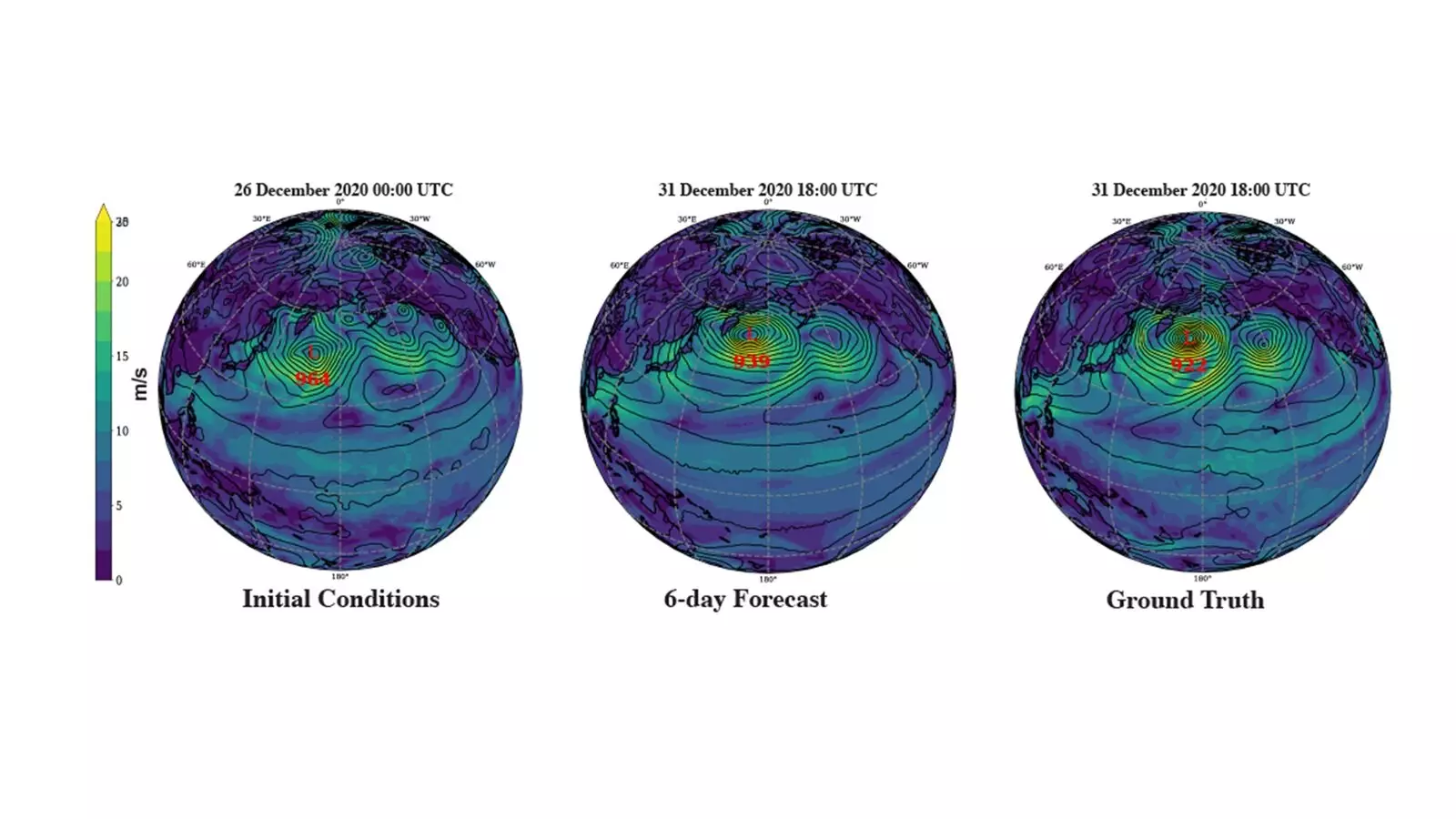Accurate weather forecasting is no longer a luxury but a necessity that underpins several sectors of the American economy. From ensuring the safety of flights to optimizing shipping routes, precise weather predictions have far-reaching implications. Traditionally, meteorologists have relied on complex physical equations relating to thermodynamics and fluid dynamics, executed on some of the world’s largest supercomputers. However, the time has come to reassess our methodologies in light of recent advancements in technology and artificial intelligence.
Shifting Paradigms: Enter Foundation Models
Elucidating a paradigm shift in weather forecasting, researchers from the U.S. Department of Energy’s Argonne National Laboratory, along with their counterparts at UCLA, are pioneering the use of AI-driven foundation models. Unlike conventional numerical weather prediction models, these AI models promise not only greater accuracy but also reduced computational costs. What’s particularly exhilarating is their ability to extend predictive horizons beyond the conventional seven-day limit, effectively offering forecasters a longer-range perspective on impending weather patterns.
These foundation models break from tradition by using “tokens” to analyze spatial-temporal data. While prevalent in natural language processing, where tokens symbolize words, the innovative twist here is that tokens comprise patches of images representing various meteorological elements like humidity, temperature, and wind speed. This represents a fundamental evolution in processing weather data—shifting focus from language to visual information.
Cost-Effective Accuracy: A Game Changer for Meteorology
One of the most compelling findings from Argonne’s research is the ability to generate accurate forecasts using low-resolution data. Historically, meteorologists believed that higher-resolution data was essential for precise modeling. The team found, however, that they could achieve comparable results to their high-resolution counterparts while operating on coarse data. This breakthrough not only streamlines computational efficiency but also opens pathways to more accessible weather data analysis.
Argonne atmospheric scientist Rao Kotamarthi aptly highlighted the innovation’s economic implications by stating, “The philosophy of weather forecasting has for years been to get to higher resolutions for better forecasts. But we’re discovering that comparable results can be reached with reduced computational demands.” This shifts the focus toward integrating AI more substantially into forecasting methodologies traditionally constrained by high resource requirements.
Challenges Ahead: The Complexity of Climate Modeling
While these advancements mark significant progress for weather forecasting, the same cannot be said for climate modeling, which remains a daunting challenge. Not only are climate patterns more intricate, but they are also evolving in real-time, influenced by rising carbon levels and shifts in the Earth’s energy balance. As Argonne environmental scientist Troy Arcomano noted, “We’ve transitioned from a stationary climate to a non-stationary one, complicating our numerical modeling.”
The prospects for harnessing foundation models in climate modeling exist, albeit with considerable challenges. The private sector’s vested interest tends to favor immediate weather applications rather than long-term climate solutions. Consequently, national laboratories and academic institutions are likely to spearhead climate modeling advancements, aimed at public welfare rather than profit. It emphasizes the necessity for collaboration between public and private sectors to address climate change effectively.
Future Prospects: The Role of Exascale Supercomputing
The dawn of advanced supercomputing capabilities at Argonne, exemplified by the new Aurora exascale supercomputer, promises to reshape the boundaries of AI-based model training for weather prediction. Kotamarthi stated, “We need an exascale machine to truly capture a fine-grained model with AI.” As researchers harness the computational power of Aurora, they can expect to develop multifaceted models that delve deeper, producing high-resolution weather predictions that were previously thought to be unattainable.
The implications of such advancements not only transcend academic interest but also feed into the ongoing discourse regarding climate change. The Best Paper Award received at the workshop on “Tackling Climate Change with Machine Learning” underscores the significance of this research. It illustrates a commitment to not just understanding weather but also developing methodologies that could potentially mitigate the impacts of climate change.
A Strategic Shift Towards Sustained Innovation
The integration of AI in weather forecasting demarcates a crucial part of a transformative era—a move towards more balanced, scientific approaches that leverage computational efficiencies while delivering accurate forecasts. It’s evident that as the applications of AI expand, the importance of investing in cross-disciplinary research that unites meteorology, climatology, and artificial intelligence will become paramount. The evolution of forecasting methodologies is no longer a distant dream; it is rapidly becoming a transformative reality that could reshape decision-making across numerous sectors.

